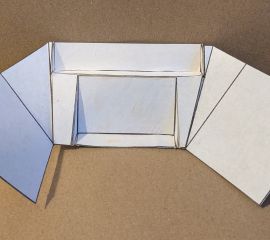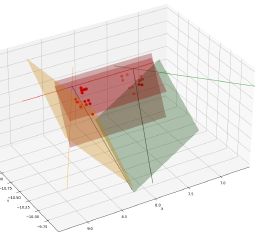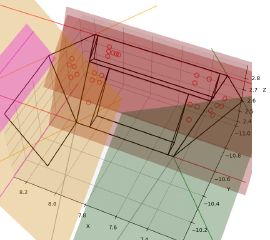Train Simulator Controller: Designing a Dashboard
Since January 2023, I have been working on a real dashboard to use with Train Simulator Classic, with a goal of allowing me to operate trains as realistically as I can without leaving my apartment. The project has taken me down many an electrical engineering and fabrication rabbit hole, from designing a prototype master controller (and ultimately reconstructing and interfacing the controller from a real train instead) to figuring out how to interface with UK train speedometers to designing my own CAN controller to link every component together. But the biggest missing part of the project has been the actual dashboard into which to place all these different controls.
As I mentioned in my blog post about my master controller prototype back in May 2023, for most of this project I have dreamed of reconstructing a dashboard resembling that of the UK Class 800, known currently as the LNER Azuma and the GWR Intercity Express Train (IET). It’s far from a small setup, and at various points I’ve considered scaling it back, including at the urging of my friend and colleague Tim “geekboy1011” Keller when we worked on door control modules together. Nevertheless, it’s my eventual objective, and for the moment design is proceeding along those lines.
 Mockup of Class 800 cab. Credit to DCA Design.
Mockup of Class 800 cab. Credit to DCA Design.
I don’t have access to a Class 80x cab: I don’t operate UK trains, and even the cab of a Class 800 currently in residence at the National Railway Museum in York, England has its doors blocked off. So deducing the measurements of a Class 80x cab threatened to present a conundrum. Luckily, I already had a ready-made 3D model in arms’ reach that I could measure - or so I thought. Train Simulator Class includes a reasonably detailed Class 80x, including a prototype Hitachi-branded Class 801 in its 2013 East Coast Mainline route. Unfortunately, Train Simulator models are in a proprietary, undocumented GeoPcDx 3D model format, and that format can include an encrypted blob of mesh data. I am not a lawyer, but attempting to reverse-engineer techniques meant to control access to copyrighted works (the encryption) appears to not be covered under the DMCA; I didn’t try to do so.
However, documenting the unencrypted, easily readable XML file format for personal, noncommercial interoperability reasons seemed more permissible, especially if anyone had published GeoPcDx with no encrypted blob inside. Armstrong Powerhouse, makers of high-quality mods and routes for Train Simulator, published a particularly nifty Enhancement Pack for Class 800-803 trains, and it includes unencrypted 3D models providing an overlay of more accurate buttons on top of Dovetail Games’ original Class 80x. My unpublished XML-to-COLLADA converter for unencrypted GeoPcDx models is far from perfect, including not capturing any color or texture information, but it’s enough to take some measurements. For example, here are multiple LODs (levels of detail) unpacked from an unencrypted 3D model of a Class 43 HST power car.
 Several LODs of a Class 43 HST power car 3D model
Several LODs of a Class 43 HST power car 3D model
From the button overlays, I was able to painstakingly measure the rough 3D position of each of the buttons, then most importantly, use the positions of each of those buttons to extrapolate the planes in which each of those buttons lies, roughly determining the surfaces of parts of the dashboard. Quickly realizing that paper-and-pen or even my trusty graphing calculator wouldn’t be enough, I began putting a Python program together to compute and visualize these planes. Thanks to matplotlib and numpy, in April 2024 I soon had three of the main planes mapped out: the primary surface in front of the driver, and the two angled side panels on which the left and right door controls are situated. It’s a little hard to visualize, but the red circles of the buttons provide some context.
Life, work, and other parts of this project intervened, but in January 2025, I turned my attention back to this part of the project, and quickly mapped out much more of the dashboard, using a mix of precise measurements from the button positions, educated guesswork from reference items in photographs (e.g., a clipboard), and pure guesswork. In the interest of both space and functionality, I also removed two screens at the left of the driver in the real train that show CCTV footage, as I have no way to be able to see those views without essentially writing my own train simulator software.
And finally, from all of these measurements, I designed papercraft prototypes, starting with a 1:10-scale paper and cardboard model. I diagrammed the components in Inkscape, printed and glued it onto thin cardboard, then folded and glued the pieces into a passable visualization of what I intend to create from wood, paint, and the many components I have collected over the last two years. From here, the design and construction continue!
 1:10 scale prototype of modified Class 80x dashboard
1:10 scale prototype of modified Class 80x dashboard



